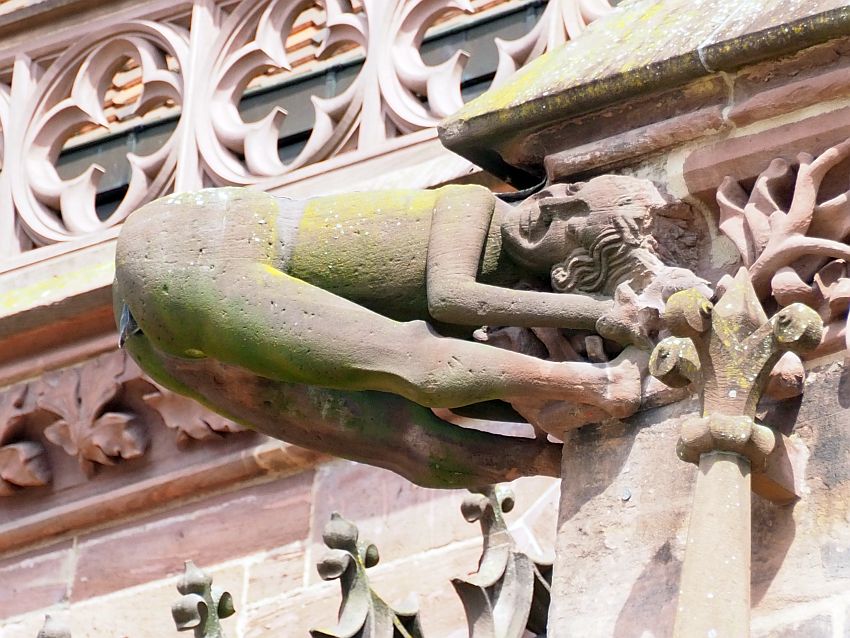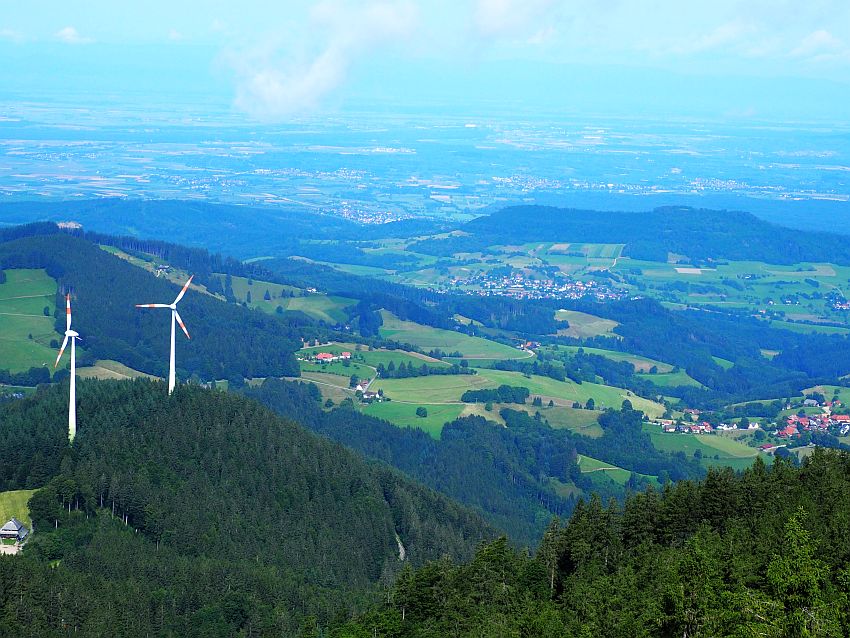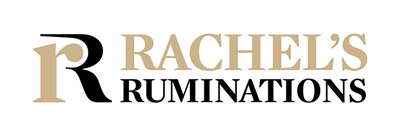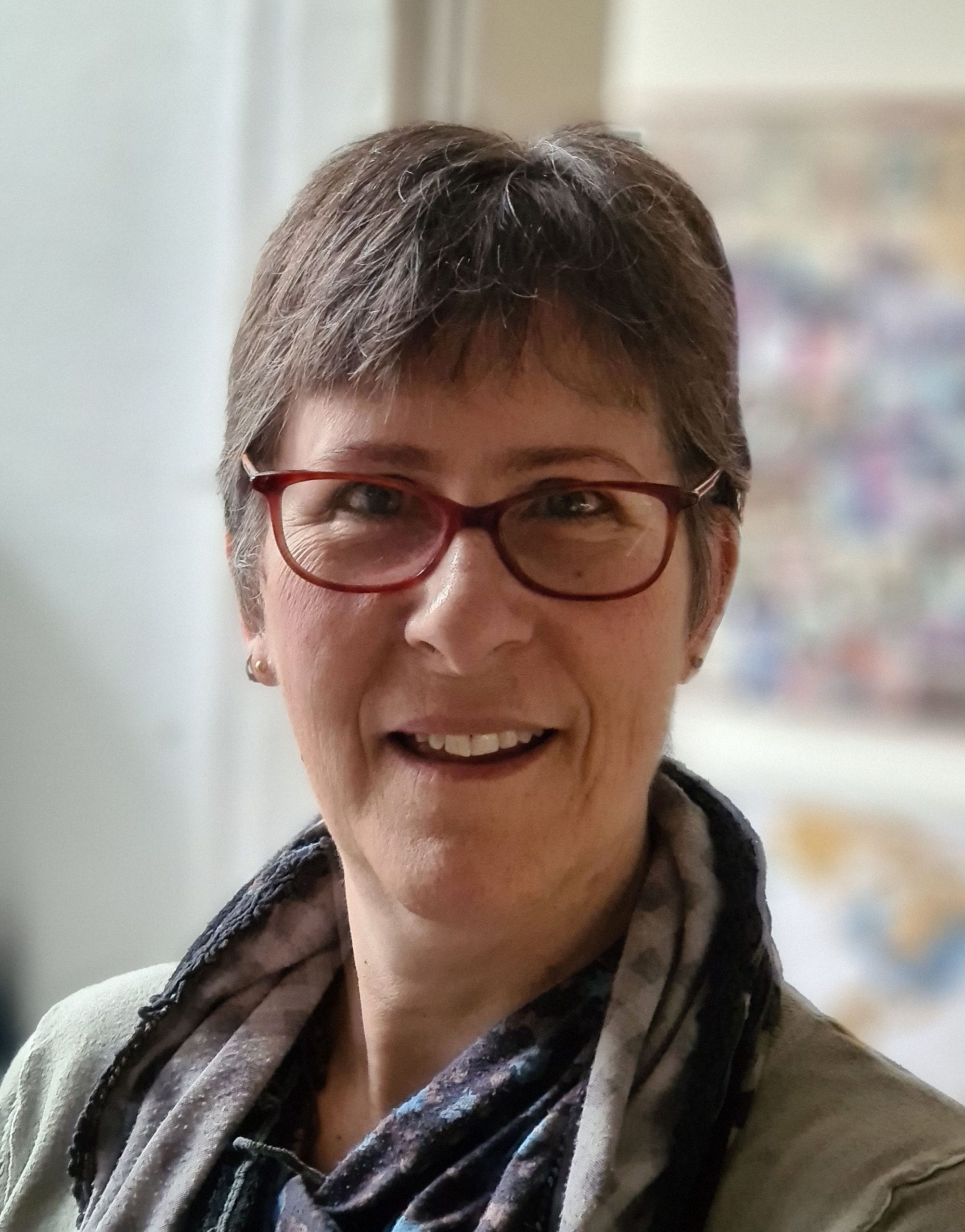Things to do in Freiburg in one day
Last week Frankfurt, this week Freiburg. Again, we – my husband and I – only had two nights in Freiburg. It’s a much smaller place than Frankfurt, so it’s possible to see all of the highlights in a day. I’ve put them all on the map below: things to do in Freiburg, Germany:
Disclosure: Our visit to Freiburg was sponsored by @Visit.Freiburg, Alte Wache and Schauinslandbahn. Nevertheless, all opinions are my own.
And another disclosure: This article contains affiliate links. If you click on one and make a purchase, I will receive a small commission. This will not affect your price.

We saw most of these sights on a very entertaining walking tour by a company called Timewalking. Our tour was private, part of @Visit.Freiburg’s sponsorship. The guide called herself “Black Forest girl Bärbele” and wore a traditional costume from the Black Forest.

Her regular guided tours are only in German, but her English is excellent and you can hire her for a private tour as well.
See the cathedral and the Münsterplatz
As I added sights to the map above, I realized that most of them were in a neat circle covering the Altstadt, the old town. Below, I’ve list them in counter-clockwise order: all the things we were able to see in Freiburg in one day. After that, I’ve added some more things to do in Freiburg for in case you have more time.
The place to start your sightseeing is at the Freiburg Cathedral on the Münsterplatz.
Freiburg Cathedral
Known as Freiburg Münster, Freiburg Cathedral is the clear centerpiece of the city, and if you only see one thing, this should be it! Even compared to some of the world’s best-known cathedrals, this is a remarkable place. In particular, the 116-meter (381-foot) spire is beautifully lacy. It’s hard to believe a) that medieval builders achieved something this delicate-looking and b) that it’s survived the centuries, including the World War II bombing that destroyed many of the buildings on the plaza around it.

Built between 1200 and 1513, Freiburg Cathedral is partly Romanesque and partly Gothic. The stained glass windows inside are exquisite. The medieval guilds gave them to the church, and you can see at the bottom of each one a symbol of the donating guild. They survived the war because they were taken down and stored safely outside the city inside a mine until the war was over. (But I understand the current ones are replicas while the originals are in a museum.)

The cathedral has some wonderful gargoyles, some of which are newer replacements of ones that are too eroded to be recognizable anymore. Many are human figures rather than the more common animals.

Münsterplatz
The square around the cathedral is called Münsterplatz. It was once the cemetery for the church, but is now a pretty, cobbled square (which is why you should wear flat, supportive shoes if you visit Freiburg!). On a sunny day, the café tables, shaded by umbrellas, are teeming with people.

Münsterplatz also hosts the market on weekday mornings, or rather two. On the north side is the food market, while on the south side, stalls sell all sorts of interesting crafts and other items.
While the whole Münsterplatz is lovely just to stroll around and shop, I’d like to point out two buildings in particular:
Kaufhaus: This is the bright red building with the arched portico. Dating to the 16th century, it was originally a merchants’ hall built by Lienhart Müller, the Cathedral’s master builder. Look for the carved figures holding up the ends of the balcony. According to “Bärbele,” our tour guide, they represent, on the right, a merchant entering the hall and, on the left, a merchant leaving the hall after paying his tax bill.

Alte Wache: On the same side as the Kaufhaus, but standing a bit apart right next to the cathedral, is a small yellow-painted building housing a café called Alte Wache. They serve a very special wine called Kalte Sofie. The best way I can explain it is that it’s a wine slushy. We tasted both the red and the white versions. The white one was particularly refreshing on a hot, sunny day. If you’re following this list in order, it might be better to wait until you return to Münsterplatz before you enjoy this!

Take a stroll to see the architecture and history of Freiburg
Walking in counter-clockwise order starting in Münsterplatz, here are the architectural sights to see in Freiburg. But first, here are a couple of things to watch for as you walk:
Bächle
As you walk, notice the Bächle: the little channels of water along the streets. Originally these flowed down the center of the streets. Built in the Middle Ages to provide household water and for fire prevention, they were likely filthy in those days, taking all sorts of waste away. In the 19th century, the city moved them to the sides of the streets and of course the city waste goes into a modern sewer system now. So the Bächle, fed from the Dreisam River, are now clean, and you might see children (and adults) wading in them in hot weather or sailing toy boats. They also help keep the air in the city cool.
Rheinkiesel mosaics
Made from river stones, the cobbling in the center of Freiburg is particularly pretty. The stones are cut in half and set with the flat edge upwards. As you walk, keep your eyes open for the Rheinkiesel mosaics along the shopping streets in the pavement. They depict something to do with the shop in front of them. So, for example, the mosaic might show a pair of scissors in front of a barbershop. Some of them don’t match anymore because businesses have left and been replaced by different ones.

Haus zum Walfisch (Whale House)
This house has an ornate late Gothic bay window, complete with gargoyles. What it’s known for, though, is that Erasmus, the Dutch philosopher, lived here for two years 1529-1531. Franziskanerstraße 5.

St. Martin’s Church
This 13th century Franciscan monastery is supposedly where a monk invented gunpowder in the 14th century. While he may have indeed stumbled on it, he didn’t really invent it; that happened centuries earlier in China. Anyway, it’s a pretty church. Rathausgasse 3.
Rathausplatz
Next door on the Rathausplatz, you’ll find a fountain with a statue on top. It depicts Berthold Schwarz, the Franciscan monk who “invented” gunpowder.
Martinstor
Freiburg has two surviving towers from the original fortifications that surrounded the city. Martinstor dates to the 13th century, though the top 2/3 of the tower were added in the 19th century in 15th-century style. Kaiser-Joseph Straße.

Zum Roten Bären
This hotel called “To the Red Bear” is purported to be the oldest hotel in Germany. Its foundations date to the 12th century, though at that time the street level was lower. The basements, once the ground floor and basement, have been restored, but aren’t open to the public. Guests at the hotel can see it, or you can schedule an appointment. Oberlinden 12. You can book a room there through this link.

Schwabentor
This city gate was, like Martinstor, built in the 13th century, but it’s slightly younger. And like Martinstor, it was made taller – about double its height – much later, in the early 20th century. So the gables at the top and the painting of St. George on the side are not original. Oberlinden.
There’s a funny story attached to the Schwabentor of a man from Swabia – hence the name – who made so much money he decided he would buy Freiburg. His wife, understandably, was not thrilled at him spending all their money. Nevertheless, off he went to Freiburg with his barrels of gold. Arriving there, he announced to the citizens that he intended to buy their town. When he opened the barrels to show what he was offering, they turned out to be full of sand because the wife had switched the contents in the middle of the night while he slept. The story ends with the townspeople laughing him out of town.

Zur Schwarzen Katz
The House of the Black Cat is where the executioner lived in the Middle Ages. The Konviktstraße in general is a very pretty cobbled street lined with charming shops. Konviktstraße 39.
Archdiocese of Freiburg building
Even office buildings can be beautiful, and this is a great example. Built in 1903-1906 for the administration of the Catholic archdiocese, it’s an art nouveau masterpiece. While the exterior is certainly interesting, looking mostly Romanesque with touches of art nouveau, make sure to take a look inside. You won’t be able to get past the reception, but take a look around you inside the entrance. The paintings are wonderful and show influences from a range of styles.

This is the end of the more-or-less circular tour of the architecture of Freiburg, though you could see lots more just by strolling the streets randomly. Now is the time to return to Münsterplatz and reward yourself with a wine slushy!
Take a hike
Schlossbergbahn and Schlossberg
If you still have some energy to walk, make your way to the Stadtgarten. It’s a pretty and green park, but the reason for going there is to take the Schlossbergbahn. This is a short funicular railway up to Schlossberg, the wooded hill above the town. The trip takes three minutes to carry you up about 80 meters.
Schlossbergbahn: Schlossberg-Bahn Talstation. Monday-Tuesday 10:00-18:00 (but closed on Tuesday November-February), Wednesday-Sunday 9:00-22:00. Fare: Adults €3.30 one-way €5.50 round-trip; children 6-14 €2.20 one-way, €3.50 round-trip. Wheelchair accessible, as are some of the trails at the top. Website.
Alternatively, you can, of course, just climb the hill, as we did. Start at Schwabentor, cross the pedestrian bridge over the ring road, then follow the path up.
Schloss means “castle”, and this is where a castle used to stand. Only ruins remain, but the hill is covered with forest and laced with walking paths, opening up to viewpoints here and there. You can sit in a beer garden and watch the sun go down over Freiburg. Or climb up to the peak of the mountain and then take the additional steps to the top of the Schlossberg Tower for a magnificent view over Freiburg and the Black Forest.

What I’ve listed so far is all the things we managed to see and do on our one full day in Freiburg. It would be pleasant, though, to have more time there to really enjoy, for example, lots of the charming outdoor cafes and to explore the Schlossberg more completely. We also didn’t get to visit any of the museums, so at least a day or two more would have been great.
Visit a museum
So here’s a list of the local museums, in case you have more than one day in Freiburg:
Augustinermuseum
Art from the Middle Ages to the 19th century in what used to be a monastery’s church.
Augustinermuseum: Augustinerplatz. Open Tuesday-Sunday 10:00-17:00; Fridays open until 19:00. Admission: €7, but free to those under 27. Website.
Museum Natur und Mensch
The Museum of Nature and Humans combines a natural history focus with an ethnological focus. Kid-friendly.
Museum Natur und Mensch: Gerberau 32. Open Tuesday-Sunday 10:00-17:00. Tuesday open until 19:00. Admission: €5, but free for under 27s. Website.
Here are some other articles about places in southern Germany:
Museum für Neue Kunst
Contemporary art.
Museum für Neue Kunst: Marienstraße 10a. Open Tuesday-Sunday 10:00-17:00 and until 19:00 on Thursdays. Admission: €7. Website.
Museum fur Stadtgeschichte
The Museum of Municipal History is housed in the late baroque Wentzingerhaus, built in 1761. Painter/sculptor Christian Wentzinger designed and built it to live and work in. Besides exhibiting his studio, his residence and some of his works, the museum focuses on the history of Freiburg itself.
Museum fur Stadtgeschichte: Münsterplatz 30. Open Tuesday-Sunday 10:00-17:00. Admission: €3. Website.
Uniseum Freiburg
The name of this museum comes from the fact that it is the museum of Albert Ludwig University. It focuses on centuries of university and scientific history.
Uniseum Freiburg: Bertoldstraße 17. Open Thursday-Saturday 14:00-18:00. Free admission. Website.
Where to stay in Freiburg
I already mentioned Zum Roten Bären as a possible place to stay. We stayed at Stadthotel Freiburg, a 3-star boutique hotel a short walk from the city center. It was clean and comfortable with a good breakfast. It wasn’t particularly remarkable but it was quiet and well-located so we liked it. If you want to see what other accommodations you could book, use the map below:
Freiburg Tourism also has a listing of accommodations here.
A day trip from Freiburg
There are lots of things to see and do in the surrounding Black Forest, but one in particular is a great short trip outside of Freiburg: Schauinslandbahn. We did this the morning after our day in Freiburg.
Schauinslandbahn
Schauinslandbahn is a cable car, the kind with square gondolas hanging from a long cable. What’s remarkable about it is its length: it takes 20 minutes to travel 3.6 kilometers (2.2 miles) and rise 747 meters (2451 feet) up Schauinsland Mountain, elevation 1284 meters (4213 feet). That makes it the longest gondola lift in Germany.
To be honest, I was pretty terrified for the 20-minute trip up, though the trip down went somewhat better. In places, the slope of the ride is over 40%, and the way it clunked and rattled as it passed each of the supports unnerved me. Nevertheless, the views are breathtaking.

We didn’t have a lot of time, since we had an appointment to get to in Basel, so we just admired the view, both from the top of the mountain and from the tower perched on the top. That added another 50 meters to the elevation.
You could easily spend the whole day on the mountain: hiking is popular and must be beautiful. There’s a restaurant where you can sit and enjoy the view, and also a mine museum. In the winter you can go sledding, cross-country skiing, or snowshoeing.
Schauinslandbahn: Bohrerstraße 11 in Horben. Via public transportation, take tram line 2 from the main train station in the direction of Günterstal for about 15 minutes. Get off at Dorfstraße, then transfer to bus 21 in the direction of Horben. After about 8 minutes, get off at Shauinslandbahn-Tal. Open January-June and October-December 9:00-17:00 and July-September 9:00-18:00. They’re closed for maintenance for 2 weeks in early spring and 2 more in late autumn. Check their website for dates. Admission: Adults €13, children 6-14 €8.50. Fully accessible.
Have you been to Freiburg? What was your favorite thing to do in Freiburg?



